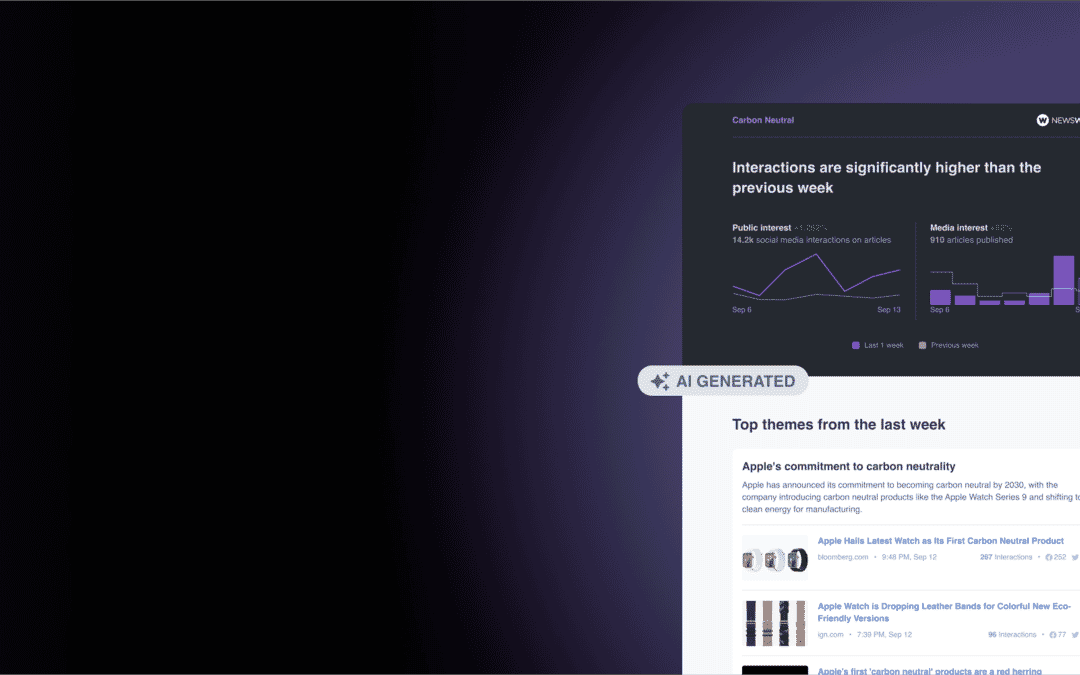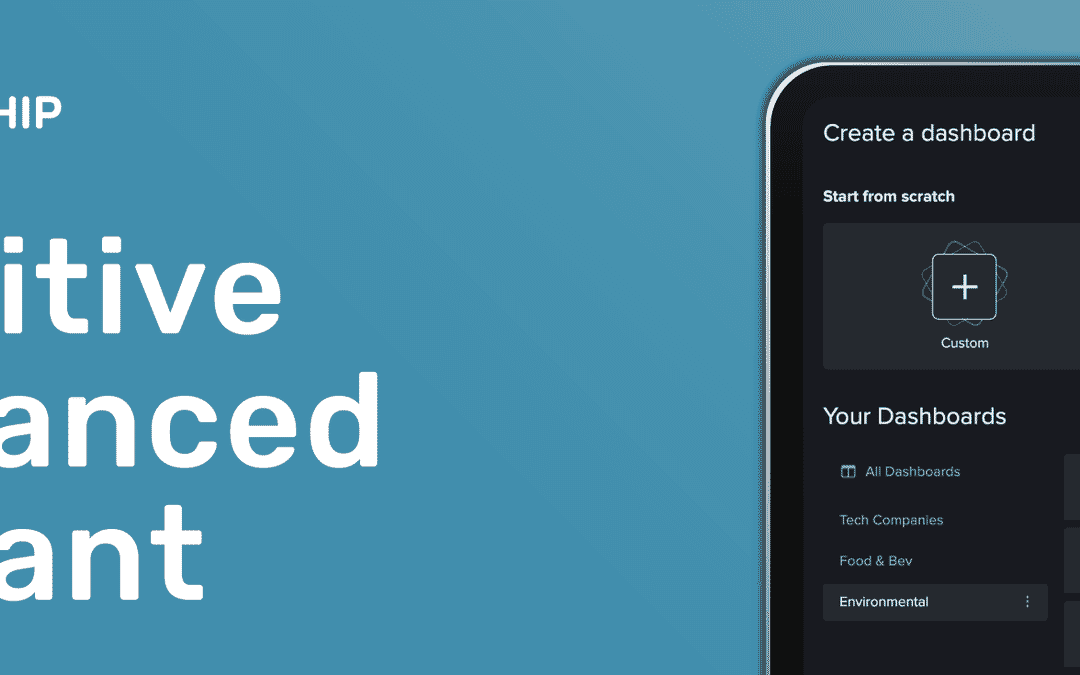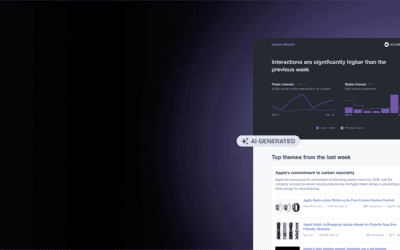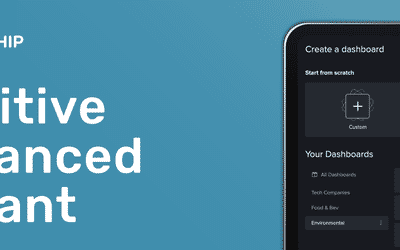April Fools 2019 was a mixed-bag, resulting in just a handful of viral campaigns. The biggest takeaway: if you’re dialed in to your audience, a major increase in engagement is pretty much guaranteed.
Ah, yes. The day that divides offices, torments family, and confuses consumers everywhere has come and gone. Publishers, brands, and PR agencies alike have to decide whether it’s worth the risk to cash in on April 1st: fool their audiences and get a laugh, or deal with the fallout. Microsoft went so far as to ban employees from pranking or participating in April Fools entirely in an internal memo, while other companies took to social media to subject us to their antics.
The most engaged content on the Web for April 1st
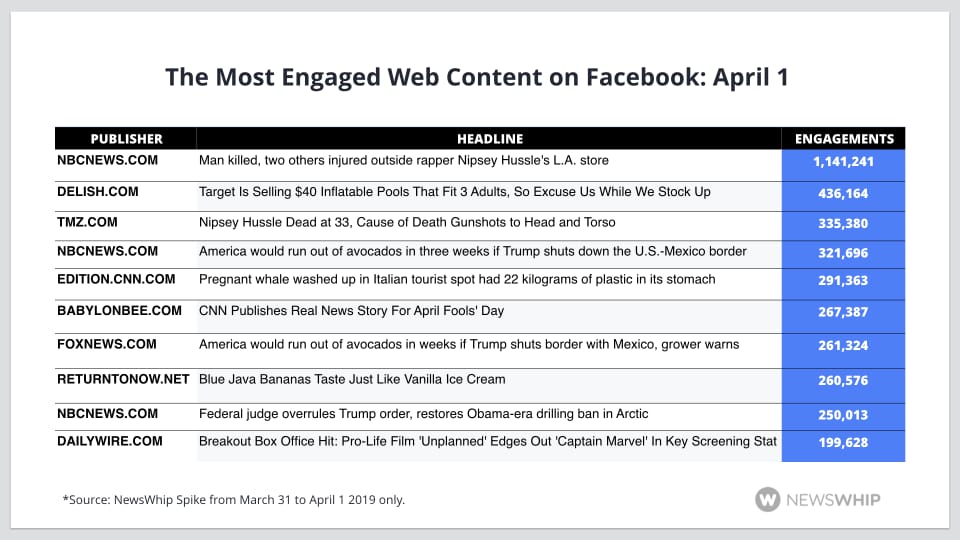
Monday was a tough day for news. Publishers were busy covering rapper Nipsey Hussle’s death, and social media was alight with people mourning the loss. It had by far the most engagements, with constant updates throughout the day diving deeper into the story.
Amid all of that, the Babylon Bee’s story about CNN publishing “real news for once” was the only ‘April Fools’ content that broke the top 10 in engagements to web content, the rest of the top 10 was comprised of normal news. The only article that came close to half of NBC’s numbers on their Nipsey coverage was Delish’s story about Target’s inflatable pools.
Native Facebook posts however, were a hotbed for brands this April Fools, with McDonald’s Australia taking the top spot. Quite a few brands went all in this year, with many acknowledging customer reactions in their Facebook comments and stretching consumers’ belief in the jokes to a maximum. Most brands posted images to Facebook early Monday morning and let the chips fall where they may, but a few stirred up strong emotions within their audiences, particularly food-related pranks, with comments pleading for their joke to become a reality.
Top ‘April Fools’ Brand Content on Facebook
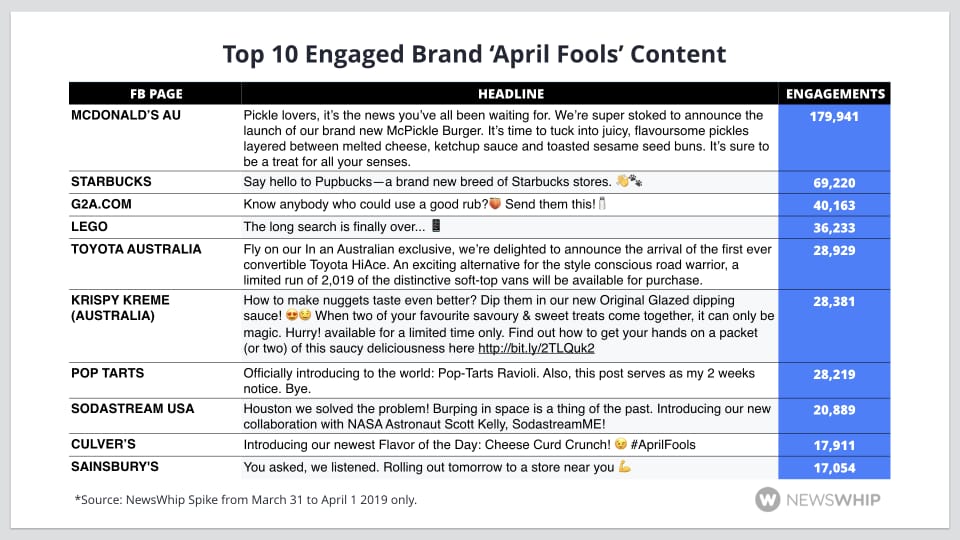
Brands that have their Facebook presence split out into regional Pages often did a different prank for each location, and three of the top ten most engaged posts came from brands’ Australian pages. McDonald’s Australia prank went viral and was covered early Monday morning once news outlets caught wind of it. Toyota “released” a new car specifically for the outback complete with an “extra built-in pie oven, called the ‘PieAce’, disguised neatly behind the rear tailgate.” Krispy Kreme also did well in Australia, advertising a one day only opportunity to snag their glazed dipping sauces for nuggets, but did not engage other markets with an April Fools post.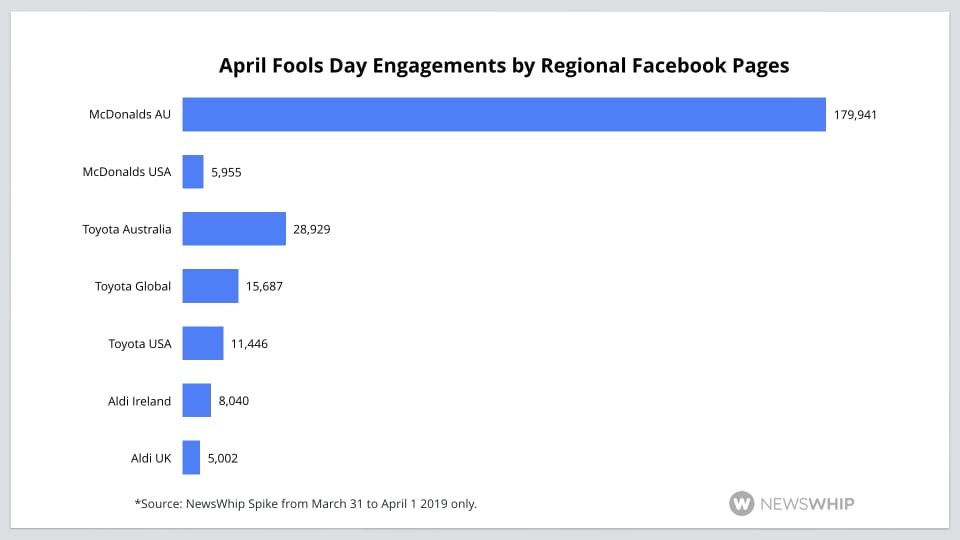
McDonald’s was another brand that split its campaigns: Australia got the McPickle, while the US got Shake Sauces, featuring different shake flavors for dipping your preferred salty snack into something sweet. Toyota had a different car “released” for each of its pages (US, Australia & Global) and even acknowledged their US car was a “segment creator.” Aldi didn’t post anything on their US facebook page, but Aldi Ireland and Aldi UK both had campaigns targeting shoppers and had many comments wishing their products were real. With the campaigns targeted toward a specific audience, they were able to highlight content in the exact areas they wanted to reach, personalizing the campaigns and getting higher engagement in these regions.
Top 10 engaged general brand posts on Facebook
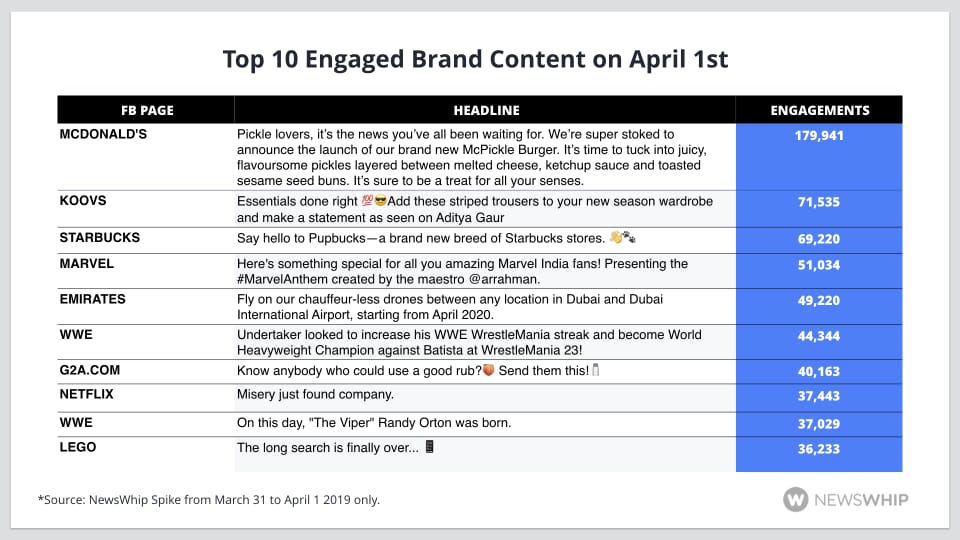
Of the top 10 posts from brands specifically on April 1, McDonald’s AU, Starbucks, G2A.com and Lego’s April Fools content broke through general updates from other pages, taking up 50% of the top content.
Publishers, on the other hand, were divided about whether or not to participate in pushing April Fools content. Some journalists took to Twitter to call attention to misinformation and not wanting to contribute, while others, like the L.A. Times, took a more direct approach in calling out their competitors in “a city in the Eastern United States” with humor and levity. Even Nieman Lab was optimistic that April Fools’ stories could help researchers to spot fake news in the future.
A note about presenting April Fools jokes on social: there were pretty much three tactics in play. Some brands dropped the content and walked away, letting speculations soar. Others posted then kept their social media managers busy by commenting back. Perhaps most frequently, brands added clarifications such as “April Fools” in the url, winky faces, #April1 or #AprilFools to make it more clear that it was a joke. Most comments on the posts were calling out April Fools regardless of whether or not it was explicitly labeled, and comments speculating the reality of the post were half the fun.
Finally, there were a few brands that used April Fools to show just how in tune with their audiences they are. A risk, but when it works, it works really well. Duolingo’s announcement of “Duolingo Push” was a hit on Twitter due to its complete and wholesome awareness that everyone snoozes notifications about practicing a language daily and their audience erupted with memes in response.
Brands with good April Fools content more than tripled their engagement per post
While April Fools can be a risky venture for brands, our data showed that engagement on this day in particular was much, much higher than the brands’ average post interactions.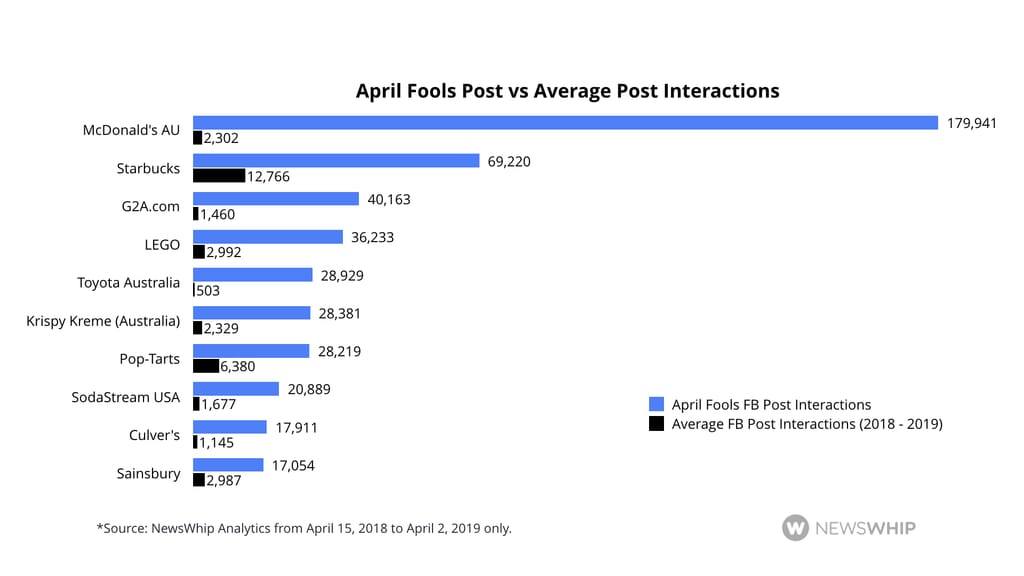
In the case of McDonald’s AU, their average post interaction from April 2018 to April 2019 was 3,424 engagements (combination of likes, comments, shares) while their April Fools post was circulated and saw engagements jump to nearly 200k. SodaStream’s highly produced video with astronaut Scott Kelly did very well, getting 1146% (a whopping 12x) more engagement and their social team responded to comments throughout the day with gifs and humorous clap backs.
It wasn’t a typical April Fools this year, but what worked well was brands being dialed into their audiences, making a joke at their own expense even, and segmenting content by region.
Apparently April Fools is very important in Australia, three of the top 10 engaged Facebook pages were directly targeting that audience, and as made evident by the L.A. Times, there is a way to deliver a humorous jab, tastefully.
To see what’s going viral right now, take a tour of NewsWhip Spike.







